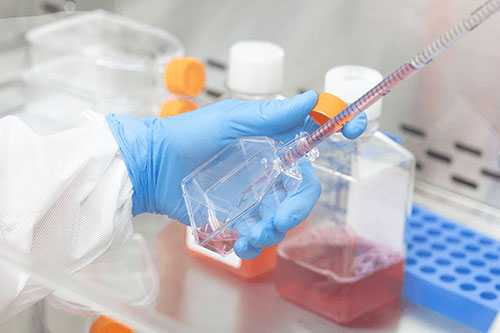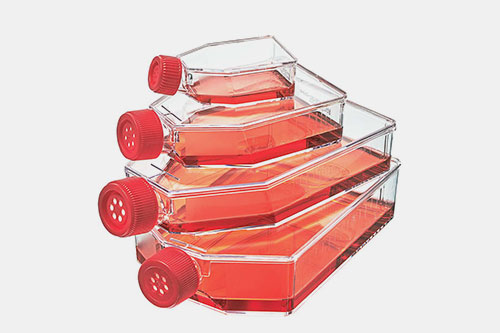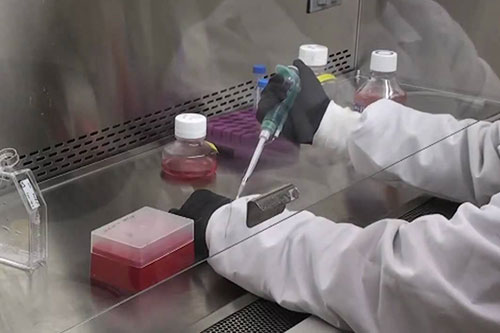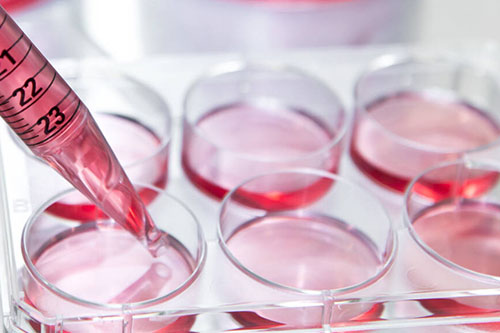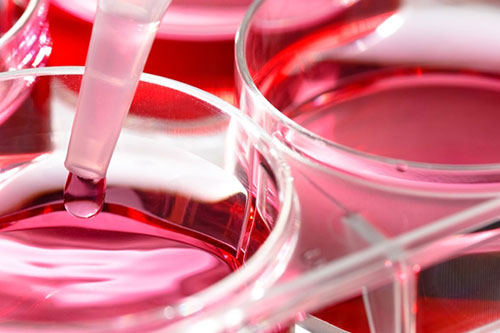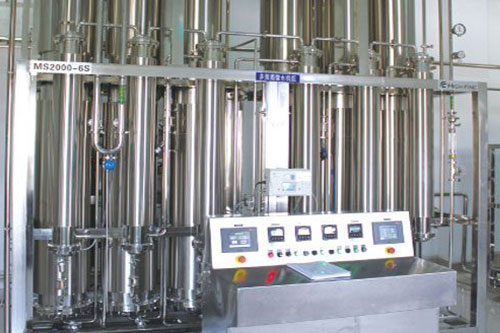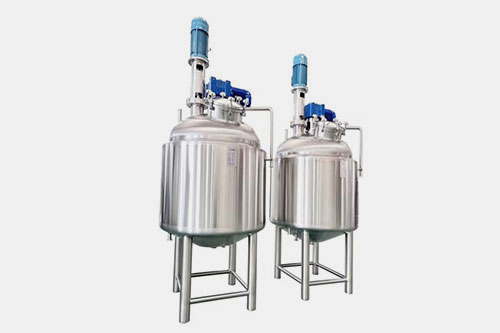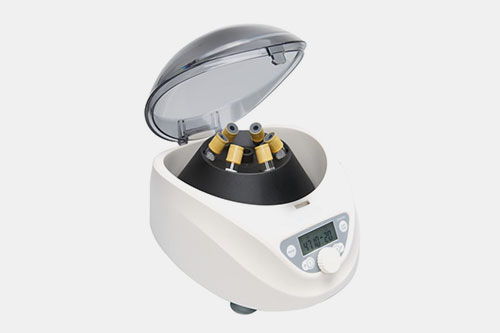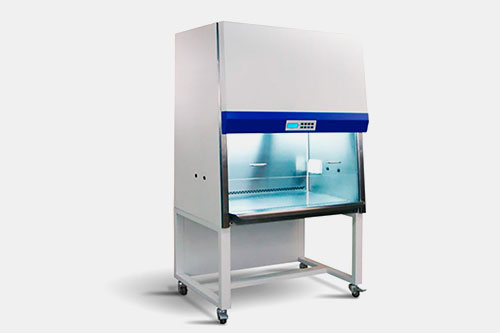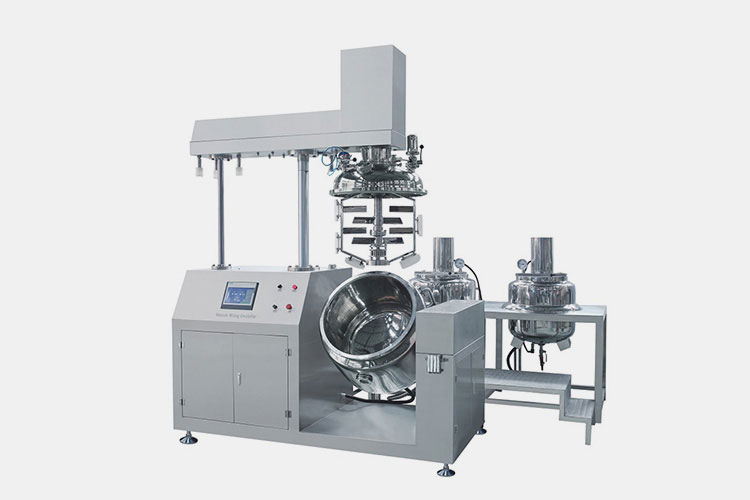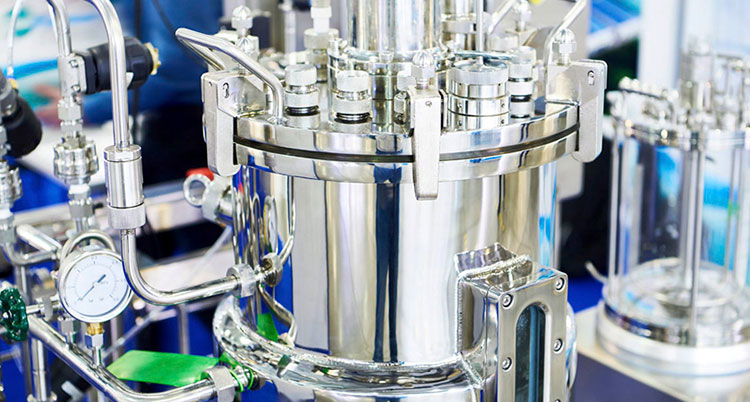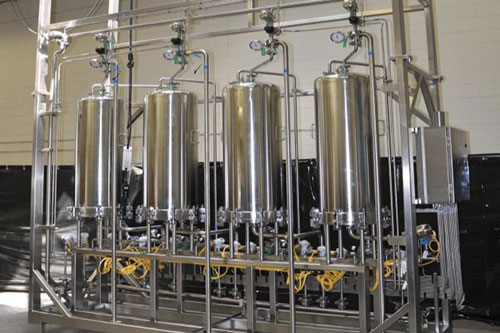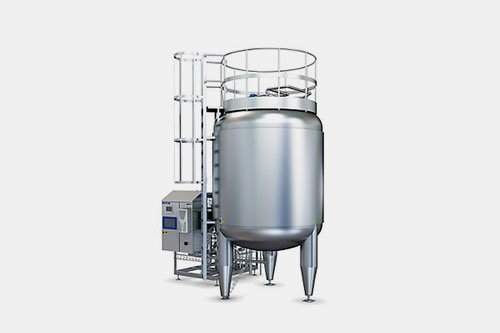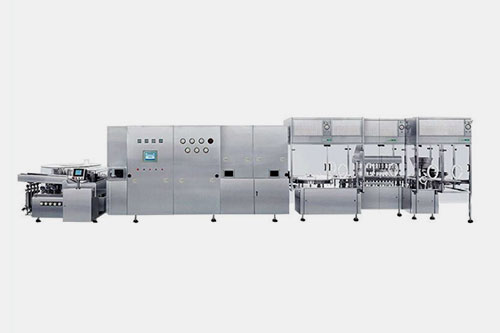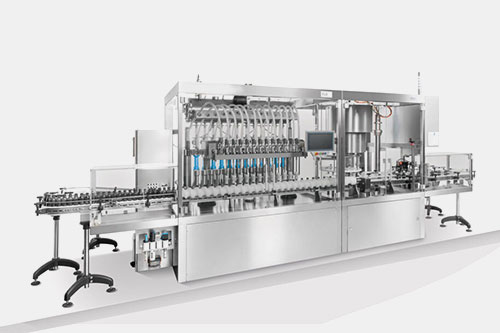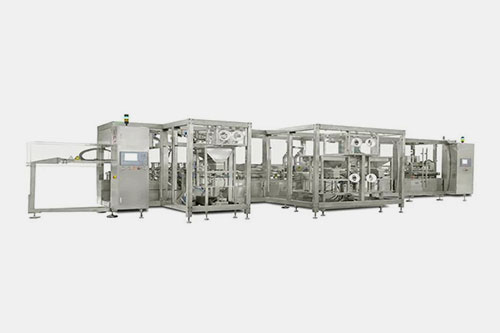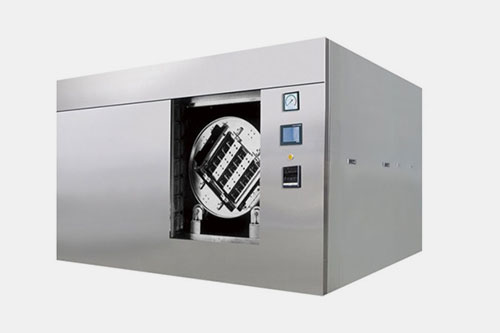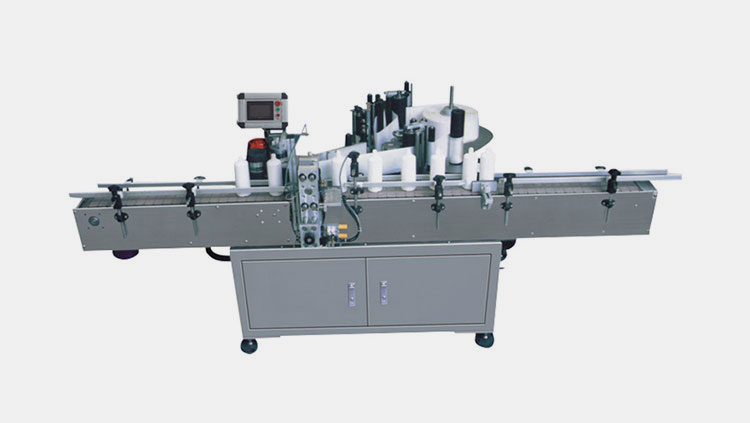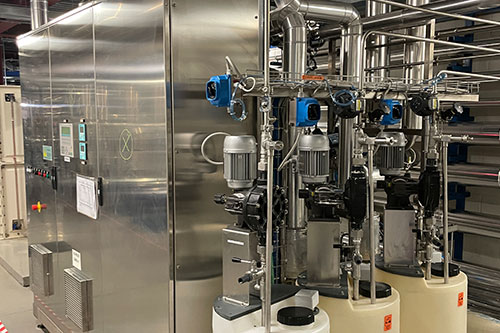T Cell Culture Medium: The Complete FAQ Guide In 2025
Do you perceive the value of T cell culture medium? T cell culture medium provides support for nourishment of T lymphocytes outside the body. In this way, it clenches enormous importance in the field of research and healthcare facility.
This document manifests you about the classification, benefits, applications, production and storage of T cell culture medium. You also get to know about the important things you must look into T cell culture medium and tips for its safe handling. Let’s read to learn more!
1.What is T cell culture medium?
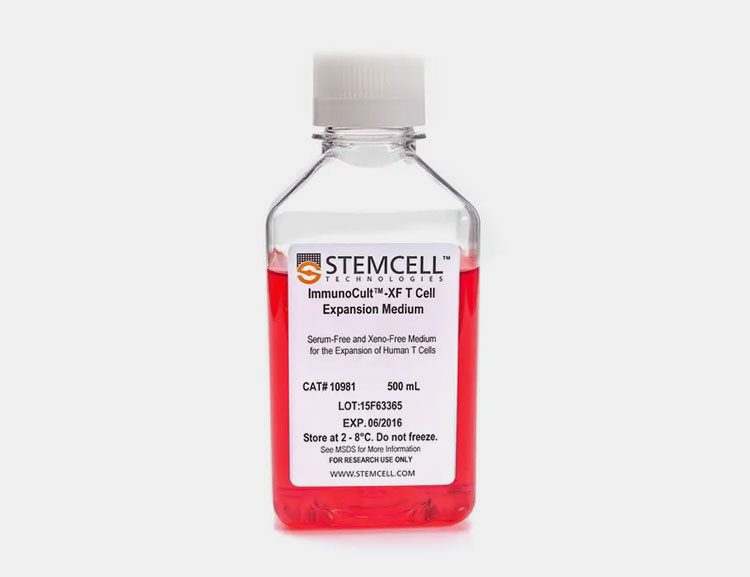
T Cell Culture Medium-Picture Courtesy: STEMCELL Technologies
Do you know what T cell can do for you? T cell is a white blood cell and also a part of your immune system and contributes in protecting you from many infections and cancers. But outside the body, these cells need any source of nutrition for growth and stimulation.
T cell culture medium is specifically prepared to provide nutritious environment for proliferation and viability of T cells out of body. Do you know why you need to nurture T cells in an artificial environment? T cells are very crucial when you want to do research related to immune system or when you have to design therapy against cancers, viral infections or auto-immune diseases.
2.Can you elaborate the benefits of T cell culture medium?
Are you known to the worthiness of T cell culture medium? This topic explains you about the beneficial role of T cell culture medium.
| Benefits | Information |
| Boosting growth of T cells
Picture Courtesy: stemcells.jp |
T cell culture medium is full of nutrition like proteins, vitamins, amino acids, lipids, glucose etc. and you find it helpful for proliferating and reviving T cells. |
| Protecting the viability of T cells
Picture Courtesy: Automata |
T cells are capable of carrying out many important physiological functions like generating cytokines or activating other immune cells. This culture medium protects the viability of T cells so that they can perform well whenever it is needed. |
| Giving balanced condition
Picture Courtesy: Global Scientific |
T cell culture medium has great tendency for providing a balanced condition for expansion and survival of T cells. |
| Presenting Reliable Outcome
Picture Courtesy: Molecular Biology |
T cell culture medium is prepared in such a way that you get a reliable outcome when you use this culture medium either for carrying out an experiment or managing a disease. |
| Offering customization
Picture Courtesy: Captivate Bio |
You can customize this cell culture medium according to T cell specifications or needs. That is the reason you can see different classifications of T cell culture medium. |
| Reducing chances of contamination
Picture Courtesy: Sartorious |
T cell culture medium is made in such a way that does not encourage contamination. |
3.Do you know the applications of T cell culture medium?
T cell culture medium is accountable for many contributions in the field of research and healthcare setting. You cannot deny this fact that the study of immune system and related disease depends upon the T cell culture medium, as this medium supports the wellbeing of T cells.
Learning about T lymphocytes:

Learning About T Lymphocytes-Picture Courtesy: MD Anderson Cancer Centre
T cells are the requisite part of immune system. Sometimes, it has become necessary to learn about these T lymphocytes to progress your research. T cell culture medium helps to provide viable T cells that make learning swift and easy for you.
Elaborating cell therapies:
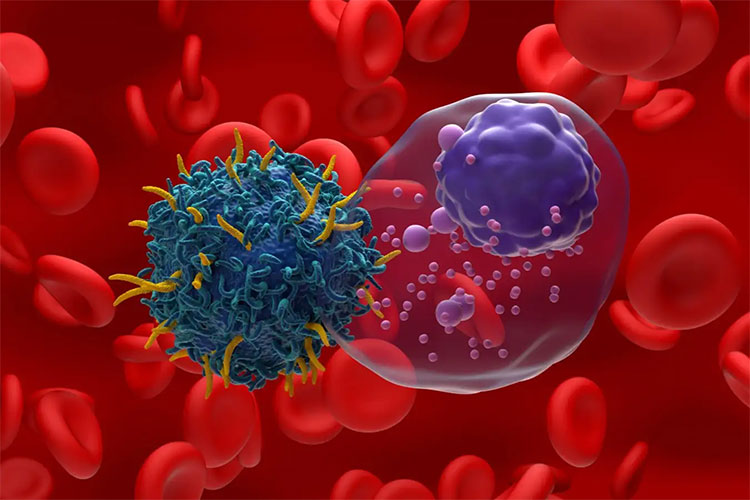
Elaborating Cell Therapies-Picture Courtesy: New Scientist
Do you know about cell therapy? Diseases that involve immune system can be managed by giving cell therapies, mostly when other therapies have failed to show dominant effects.
You can find cell therapy useful for treating many cancers. In case of developing cell therapy, you require T cell culture medium that revives the T cells in vitro and you are able to again introduce these T cells in body after modifying them.
Understanding the process of diseases:

Autoimmune Disease Mechanism Can Be Understood By T Cell Culture Medium
T cell culture medium helps you to understand the process by which diseases can be happened, mostly the auto immune or infectious diseases. T cell culture medium offers an opportunity for you to perform research on T cells by keeping these cells functional and effective.
Discovering vaccines and drugs:

Vaccines And Drugs Are Discovered By The Help Of T Cell Culture Medium-Picture Courtesy: Technology Networks
You are witnessing so much development in the field of medicine and T cell culture medium also has its part in this development. You can be able to make vaccines and drugs just by researching upon T cells, its behavior and mechanisms that are responsible for causing a disease or viral infection.
4.What can be the valuable components of T cell culture medium?
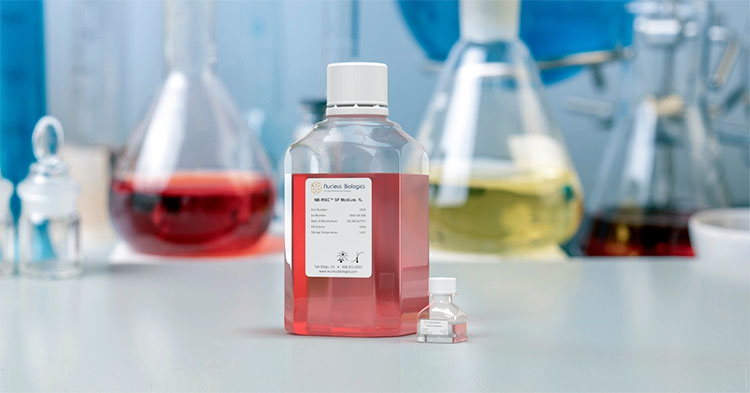
Valuable Components Of T Cell Culture Medium-Picture Courtesy: Nucleus Biologics
Here you can avail the brief information about the components that are used in combination to form different types of T cell culture medium. These components possess various abilities that are responsible for functioning of T cell culture medium.
| Valuable components | Their function |
| Basal medium | This medium is considered as basic component that combines with other components to form T cell culture medium. It contains amino acids, vitamins and essential salts that are integral for cell proliferation and survival.
Most commonly RPMI 1640 is used as basal medium. |
| Buffering agent | Buffering agents has to be maintained to get optimal pH. It is necessary to set the medium at certain pH for the survival of T cells.
You can use sodium bicarbonate and carbon dioxide to keep pH on optimum level. |
| Serum | Serum has its role to present essential proteins for the growth of T cells. For this you can use fetal bovine serum (FBS).
This serum is taken from cattle animals and widely used in T cell medium culture. Few drawbacks limit the use of this serum, and for clinical settings serum-free T cell culture medium is demanded. |
| Inorganic salts | You are required to add inorganic salts like sodium chlorides, potassium chloride etc. in T cell culture medium. these salts are very important to keep osmotic balance in range in culture medium Also the cell can remain viable and can retain its sturdy structure due to presence of salts. |
| Vitamins | A huge numbers of vitamins are added in T cell culture medium to provide favorable condition for growth of T cells. These vitamins can take part in metabolic reactions in the cell. |
| Source of energy | For providing energy to the T cells, you have to add some sources of energy. Carbohydrates and mainly glucose serves as a good source of energy for cell. |
| Trace elements | Small amounts of trace elements can also be added by you, like copper, zinc, iron etc. These elements can help the cell to perform its cellular processes. |
| Supplements | Other compounds can also be added to provide necessary supplementation to the T cell culture medium. For this purpose, you can add antibiotics, growth factors etc. that help in expansion of T cells and also in its activation. |
| Cytokines | You can also add different cytokines like IL-2, IL-7, IL-15 to enhance the growth and stimulation of T cells in T cell culture medium. |
| pH marker | You often see the red colored T cell culture medium; this is due to addition of Red pigment to the culture medium. This causes convenience in detecting the variation in pH. |
5.How T cell culture medium can be classified?
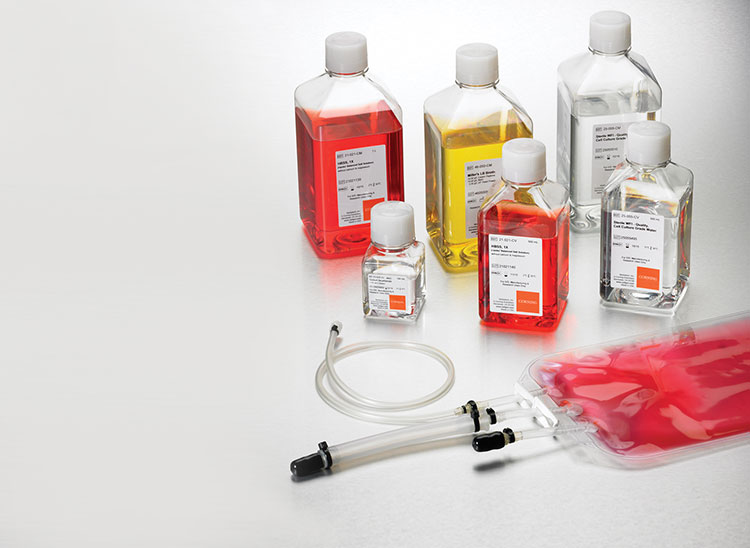
Classification Of T Cell Culture Medium-Picture Courtesy: Corning
Do you know T cell culture medium can be distinct with each other? Yes, why not, T cell culture medium is made with specifications to offer favorable conditions for T cell and that’s the reason they can be different. Here you can be able to acquire knowledge about classification of T cell culture medium.
| Classification of T cell culture medium | Information |
| Serum containing T cell culture medium | Do you know what this medium contains? It contains basal medium with serum to provide a nutritious source for making T cell growth and expansion better.
Usually you can see RPMI 1640 is used along with fetal bovine serum (10%) and it proves to be economical and effective both for nurturing T cells. This medium is preferably used for research but not for healthcare facility. Do you think why? As fetal bovine serum is taken from cattle animals, not humans. This thing can be a source of contamination. |
| Serum-free T cell culture medium | Do you know the other name for serum-free T cell culture medium? You can also find this medium under the name of xeno-free T cell culture medium.
Xeno can be anything which is foreign but foreign for whom? Obviously for your body. This T cell culture medium is made by combining basal medium with any human serum but not with fetal bovine serum. Have you thought why it is needed to do that? Researchers have experienced that addition of serum containing medium can be a source of contamination and results can be varied due to presence of protein containing serum. This medium is preferably used for healthcare facility as it does not have chances of contamination and changes in result outcome. |
| Chemically-defined T cell culture medium: | Do you know a T cell culture medium that is efficacious and compatible both at the same time? Chemically-defined T cell culture medium has all the properties that you are looking for, it proves to be a best choice for research and clinical setting too.
Do you wonder what makes this medium culture so efficient? It is designed particularly according to the T cells. It contains basal media, buffer and other important supplements like growth factors, lipids, cytokines or albumin to ease the expansion of T cells. You can find it most relevant, as it does not cause any change in results or contamination because it does not contain any animal sourced serum. |
6.What packaging container is suitable for T cell culture medium?
T cell culture medium is a sterile product and required to package in an appropriate container that can maintain its sterility. Here you get to know about the packaging container and why this container is preferred to package this culture medium.
Vials:
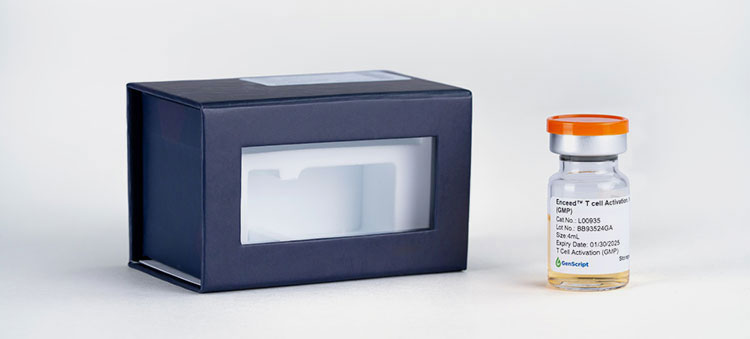
Vials Are Used To Package T Cell Culture Medium-Picture Courtesy: GenScript
Vials are small bottles, shaped cylindrically and usually made from borosilicate glass. These vials are likely to use for packaging T cell culture medium and reasons are justified.
Vial is supposed to ensure the sterility and efficacy of product due to its way of sealing.
It serves as the best choice when you are required to use T cell culture medium for clinical facility as chances of contamination are very rare.
You can handle it easily and it also adheres to the GMP (good manufacturing practices) guidelines.
Plastic bottles:
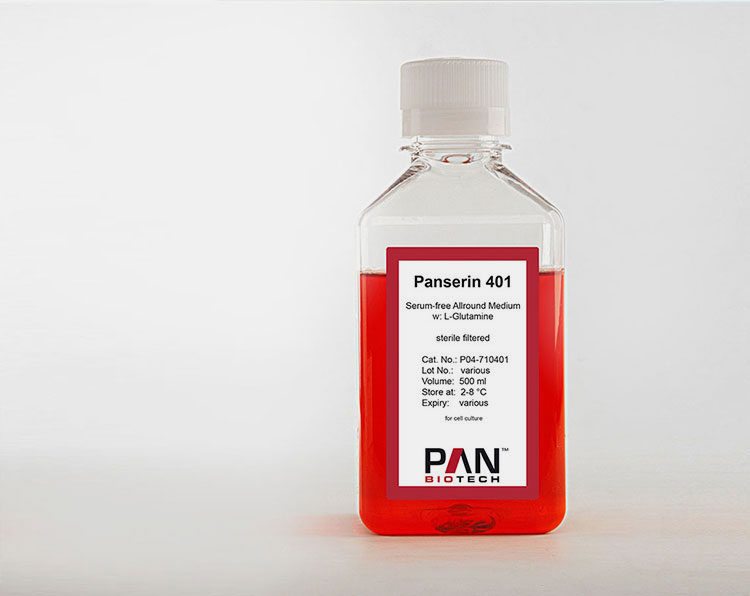
Plastic Bottles Are Used To Package T Cell Culture Medium-Picture Courtesy: DDBiolab
- You can encounter T cell culture medium mostly in plastic bottles and there must be so many reasons to package a sterile product in this container.
- These bottles are made with high quality plastics, which you can call polyethylene terephthalate (PET). This plastic is non-reactive and preferable to package sterile products.
- You always find it easy to sterile these plastic bottles and they can also be packed tightly to avoid chances of contamination.
- These bottles are easy to use and handle, as chances of shattering are less as compared to glass bottles. It offers you durability and cost effectiveness at the same time.
- For research purpose, plastic bottles are preferably used.
Cell culture bags:

Cell Culture Bags Are Used To Package T Cell Culture Medium-Picture Courtesy: BioPharma Dynamics
You may also see T cell culture medium packaged in cell culture bags. This is done mainly when you require this medium for healthcare facility or cell therapy.
The prior advantage of this cell culture bags is that they are completely closed and ensures the sterility of culture medium and avoids contamination. When you have to perform cell therapy, you may prefer cell culture bags over bottle for many reasons.
You often observe that cell culture bags are made from ethylene vinyl acetate that can allow you to perform the step of gas exchange without opening the bag. Do you know how beneficial is this? Carbon dioxide and oxygen are necessary to keep the pH and oxygen level in optimal range and this helps the T cells grow much better.
You may find cell culture bags easy to deal with, they do not get shattered, can easily be stored and you can also use them in your way.
Cell culture bags offer you single-use formulation in huge quantity with sterility and safety.
7.Can you define the production of T cell culture medium on industrial basis?
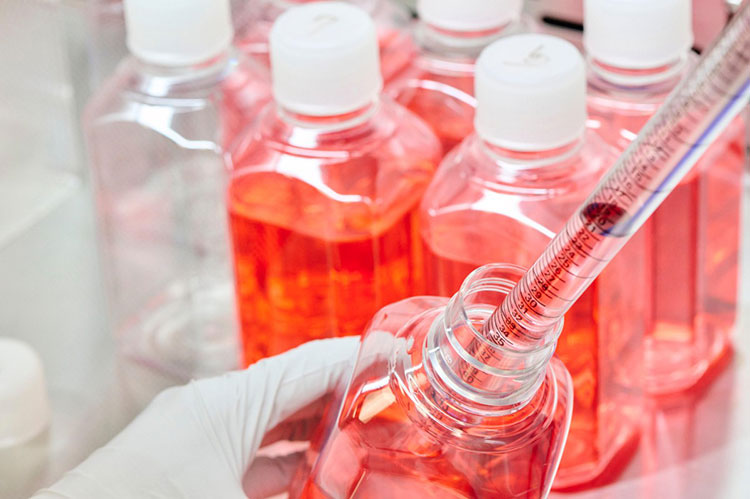
Production Of T Cell Culture Medium-Picture Courtesy: Nature
T cell culture medium production demands you to perform all steps by following good manufacturing practices (GMP). This ensures the sterility, safety and efficacy of T cell culture medium.
| Steps of production | Information |
| Dispensing and weighing of raw material: | You are needed to procure raw material for production of T cell culture medium.
Initially you need water for injection, powdered form of RPMI 1640, fetal bovine serum (FBS), sodium bicarbonate, glucose, essential amino acids, vitamins, trace elements, inorganic salts and other growth factors like cytokines. You must keep in your mind that all raw materials must be sourced from reliable and documented sources. You can obtain water for injection after treating water by water purification system. You can formulate RPMI 1640 by dissolving the accurate amount of RPMI1640 in water of injection by the aid of jacketed mixing vessel. After that you can add sodium bicarbonate to regulate the pH of this basal medium. After formulation, you can filter it by using sterile filter. You can acquire FBS by collecting blood sample from bovine fetus. Let the blood clot naturally and then you can isolate the serum by method of centrifugation. After that you can filter the serum for sterilization. After the procurement of all the raw material, you can weigh them accurately by using weighing balances. You can perform the process of weighing in laminar flow cabinets to avoid any kind of contamination. |
| Mixing of components: | Now all components are required to mix evenly to get uniformity in formulation.
On industrial basis, high shear mixers are used to mix the components of T cell culture medium. |
| Filtration: | Now you can perform filtration process to remove impurities and microbes from formulation.
For this purpose, ideally you can use depth filters. These filters enable you to eliminate unwanted particles and microorganism from all surfaces of the T cell culture media. You may find this filter far more efficient in removing these contaminants. |
| Storage of formulation: | After filtration, you have to store the T cell culture medium. Storage tanks are used for storage of this medium.
These tanks are made from stainless steel, and prove to be non-reactive with the formulation. |
| Filling and sealing: | Now you move further to fill the formulation in respective packaging container. You must keep this in mind that conditions are kept aseptic while filling and sealing.
As you are going to fill T cell culture medium in vials, you probably need vial filling line. This equipment works efficiently and performs each step automatically. At first, vials are washed and then sterilized. After sterilization, vials are moved to filling station where correct amount is filled by using filling nozzles. After filling, stoppering can be done by using rubber stoppers. For sealing, vials are shifted to sealing unit, where aluminum caps are ideally used to seal these vials. For filling the T cell culture medium in plastic bottles, you can use bottle filling machine. Process you can follow is to sterilize the plastic bottle firstly then load the bottles in filling machine. You can shift bottles to filling station by the help of conveyor. Bottles are filled with precise amount of T cell culture medium and then shift to sealing unit. Sealing can be done by the help of screw caps. For cell culture bags, you can utilize soft bag IV solution production line. The process is started with delivering the film into machine. This film is printed with important information then moved to form bag for filling. As bag is formed, it is shifted to filling station, where it is filled with calculated amount of T cell culture medium. After filling, you may observe that cap is fed into this bag to seal it. Cap is welded to avoid any leakage. After that bag is discharged. |
| Sterilization: | After packaging, you must sterilize the container to nullify the risk of contamination in formulation. Contamination can be possible during filling and sealing process, so steam sterilization is utilized to kill the microorganism. |
| Quality control: | You need to perform various tests to assure that the formulation holds the desired quality.
Tests are done to check pH, osmolality, stability, microbial presence etc. |
| Labeling: | Plastic bottles are needed to be labeled with important information. You can use labeling machine for this purpose. |
| Refrigeration: | You have learnt that T cell culture medium comprises of components that are heat sensitive.
For preserving this culture medium, you are required to store it in refrigerator frequently after packaging. This step keeps the product stable, potent and sterile as long as it can be. |
| Documentation: | All integral information, either it’s related to raw material, process or equipment, must be documented to refrain from any trouble in future. |
8.What kinds of equipment are required for production of T cell culture medium?
For the production of T cell culture medium, you must acquire the equipment that can follow regulatory standards. Here all necessary equipment are defined briefly to give you awareness about required equipment for this production.
| Equipment: | Details: |
| Water purification system
AIPAK Water Purification System |
You utilize water purification system to acquire water for injection. This equipment assures high quality and purity water. |
| Jacketed mixing vessel
|
You care prepare components by using jacketed mixing vessel. This equipment comprises of stainless vessel, agitator and controlled temperature system. It offers uniform mixing of ingredients. |
| Centrifuge
|
Centrifuge is applicable to perform the process of centrifugation. This equipment spins and separates the components of blood sample due to centrifugal force. |
| Laminar flow cabinet
|
Laminar flow cabinet is integral for carrying out the weighing process of raw materials.
This equipment ensures a sterile and impurities-free environment, so it becomes convenient to deal with sensitive products. It works by filtering the air and promoting one-directional airflow, which keeps the environment contamination-free. |
| High shear mixer
|
High shear mixer helps you to mix the components of T cell culture medium. High shear force is accountable for consistent mixing of all components. |
| Sterile filter
|
Components are required to be filtered before subjecting for incorporation in T cell culture medium.
Micro membrane of size 0.22µ is present in this equipment that restricts contaminants and microbes and allows only formulation by it. You can filter basal medium, serum or other components by using this equipment. |
| Depth filters
|
T cell culture medium is filtered by using depth filters. These filters are capable of filtering all surfaces of the medium and you obtain sterilized formulation after using it.
This equipment works by different mechanisms to eliminate the contaminants and ensure high quality filtration. This filter comprises of porous material accompanied by tortuous pathway that helps to trap the contaminants. You can see mechanisms like mechanical straining, adsorption, diffusion and interception by which this filter stops the impurities and microbes deeply. |
| Aseptic storage tank
|
Aseptic storage tank has tendency to store sterile products in aseptic environment.
It is made from stainless steel and can preserve the quality of stored product. It works by introducing sterile air or inert gas, which continues the overpressure in tank. Overpressure is the pressure that is above the normal pressure of tank. Maintaining overpressure helps to restrict the contaminants from entering the tank. |
| Vial filling line:
AIPAK Vial Filling Line |
Vial filling line is an automated machine that helps to fill and seal vials.
This machine has capability to maintain sterile conditions throughout the whole process. It contains four different units that take part in the process: Washing unit Sterilization unit Filling and stoppering unit Sealing unit. You can observe that restricted access barrier system (RABS) is used to secure the filling line from contamination. |
| Bottle filling machine
|
Bottle filling machine is automated equipment that is helpful in filling T cell culture medium in bottles. Plastic bottles are sterilized prior to its loading in bottle filling machine. Sterilized bottles are moved to filling unit to get filled with the formulation and then shifter to sealing unit for the purpose of capping. |
| Soft bag IV solution production line
AIPAK Soft Bag IV Solution Production Line |
Soft bag IV solution production line is automated machine that consists of many important parts.
These parts include printing unit for printing important information, bag forming unit, filling unit and capping unit. |
| Autoclave
AIPAK Autoclave |
Autoclave is knowingly used in pharmaceutical industries for the sterilization of containers and products.
This equipment uses steam that cannot affect the efficacy of product. |
| Labeling machine
AIPAK Labeling Machines |
Labeling machine helps you to label plastic bottles by placing labels on bottle. Labels are applied by adhesive method. |
| Clean-in-place (CIP) & sterilization-in-place (SIP)
|
This equipment enables you to clean or sterilize the machine without dissembling it.
For maintaining the sterile conditions, this system is required in pharmaceutical production. You can observe that it works automatically and use heat, chemicals and water for cleaning. For sterilization, steam works best. It presents convenience for cleaning and sterilization without promoting any chances of contamination. |
9.What challenges can be experienced during production of T cell culture medium?
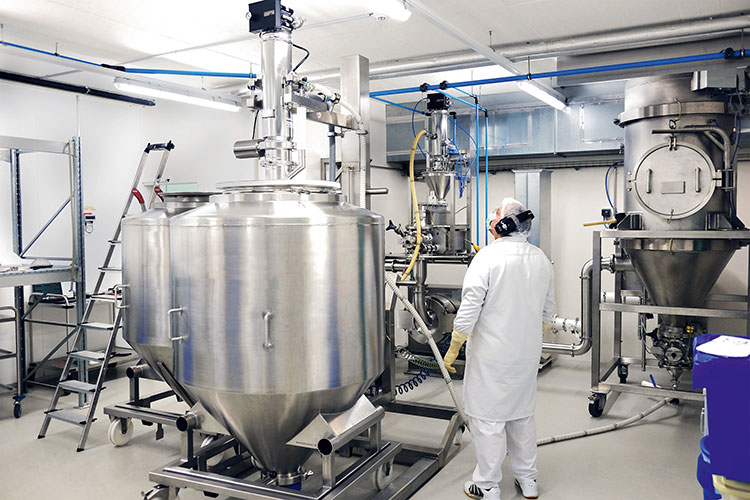
Challenges Of Production Of T Cell Culture Medium-Picture Courtesy: BioConcept Ltd.
T cell culture medium contains components that are vulnerable and demand GMP compliance in production. During the process of production, you may notice several challenges. This topic narrates about all challenges and their solution to provide you necessary awareness.
| Challenges | Solution |
| Contamination in T cell culture medium can be seen and reason is well known. GMP guidelines are not followed properly and aseptic conditions are not conserved. | You must carry out the whole manufacturing process in clean rooms, where temperature and humidity is under control and air is filtered by the help of HEPA filters.
GMP guidelines must be followed during whole process. Sterilization means like sterile filters or autoclave must be utilized precisely. |
| You may experience instability in formulation of T cell culture medium and this can be due to inadequate storage conditions or low grade raw material. | You must inspect about the quality of raw material before adding it into formulation. Always procure ingredients from authentic source.
You must store the formulation in favorable storage conditions. |
| You may witness that T cell culture medium is not working effectively. It is lacking the ability to provide environment for cell proliferation and revival. This can be happened due to ineffective components or inappropriate composition of T cell culture medium. | You must compose the T cell culture medium according to needs of cell. Look for the components that have to be incorporated to provide exaggeration to cell growth and survival.
All components must be inspected to check their quality, either it matches mandatory standards or not. |
| You may see variation in pH in T cell culture medium. This happens due to inappropriate levels of buffer or carbon dioxide. | You must remember to use buffer in formulation.
You must monitor the levels of carbon dioxide. You must monitor the pH of formulation to avoid problem in cell preservation. |
10.What aspects are integral for storage of T cell culture medium?
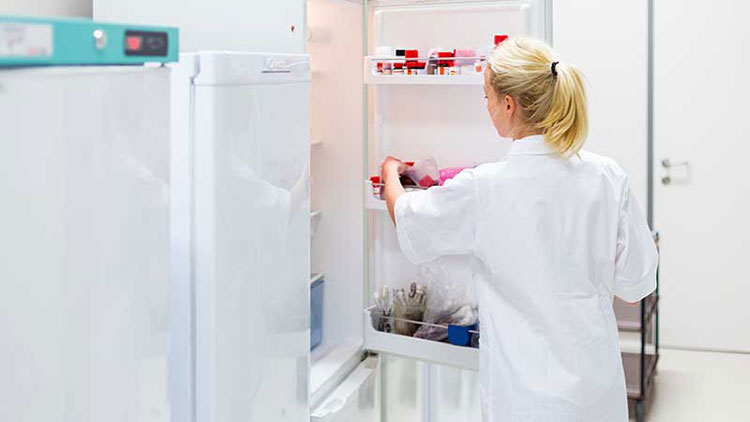
Aspects Of Storing T Cell Culture Medium-Picture Courtesy: Tovatech
Storing T cell culture medium in reassuring storage conditions can help you maintain the potency and quality of medium. There are some aspects that can influence the storage of T cell culture medium and here you will get the understanding of these integral aspects.
| Aspects | Importance |
| Storage temperature: | Temperature grabs huge importance in storing T cell culture medium. You can consider 2 ̊C – 8 ̊C as suitable temperature for storing T cell culture medium. Refrigeration is requisite for storing this medium.
You must keep in mind that freezing can degrade your T cell culture medium, so avoid storing medium at very low temperature. |
| Light exposure: | Do you know what light can do to your T cell culture medium? it can damage it. There must be light sensitive components present in culture medium that require extra care from light exposure. |
| Expiration: | You can use T cell culture medium within six to twelve months of manufacturing, but this limit minimizes when you opened the container.
You can utilize this culture medium within few weeks after opening. |
| Aseptic condition: | Maintaining aseptic conditions is very crucial for stability during storage.
Presence of microorganism can make formulation ineffective and harmful. |
| pH: | Preserving the suitable pH of T cell culture medium is necessary. You must remember that carbon dioxide can cause variation in pH, so it is advised to use airtight containers to avoid change in pH. |
| Packaging container: | You must choose right packaging container that can confirm the sterility, safety and potency of t cell culture medium. |
11.What are the precautions for handling T cell culture medium?
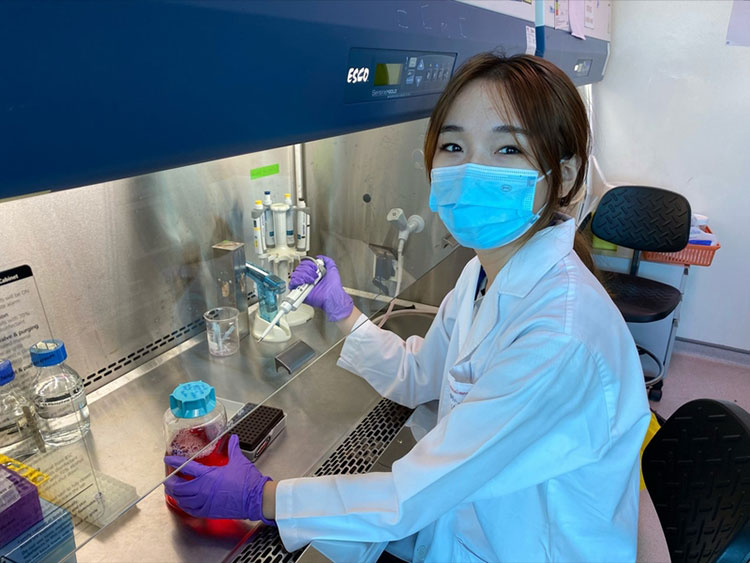
Precautions For Handling T Cell Culture Media-Picture Courtesy: MIT News
T cell culture medium has to be handled with proper care. Here you get the awareness about precautions that are crucial for working with this medium.
You must use personal protective equipment PPE for handling T cell culture medium. PPE includes insulated gloves, lab gown and face shield to avoid any harm.
You must handle T cell culture medium in a closed and sterile area to prevent the prevalence of microorganism and harmful substances in culture medium.
You must check expiration before using T cell culture medium, as expired medium can cause damage to cell.
You must choose the right type of T cell culture medium, like for research purpose serum containing T cell culture medium is used while for clinical purpose you prefer xeno-free T cell culture medium.
You must always use sterile container for handling and storing T cell culture medium and chose distinct container for every cell type.
You must label the containers with important information to avoid any accidents, like date of expiration, type of culture medium, cell type etc.
You must maintain storage conditions that keep T cell culture medium safe and effective.
If you find any kind of contamination, discard the medium in suitable manner that do not encourage the spreading of harmful effects.
Conclusion:
T cell culture medium is a crucial part of research and clinical facilities. Several advancements in therapeutics are made by the support of T cell culture medium. This medium presents you excellent way to expand and revitalize T cells. Production of this medium demands for GMP compliance and storage conditions are also needed to be conserved. Precautionary tips for handling T cell culture medium must be followed. You can acquire more information about T cell culture medium by just visiting AIPAK ENGINEERING!
Don't forget to share this post!
CONTACT US
Tell us your raw material and project budget to get quotations within 24 hours.
WhatsApp Us: +86 181 7101 8586
 Tell us your material or budget, we'll reply you ASAP within 24 hours
Tell us your material or budget, we'll reply you ASAP within 24 hours

